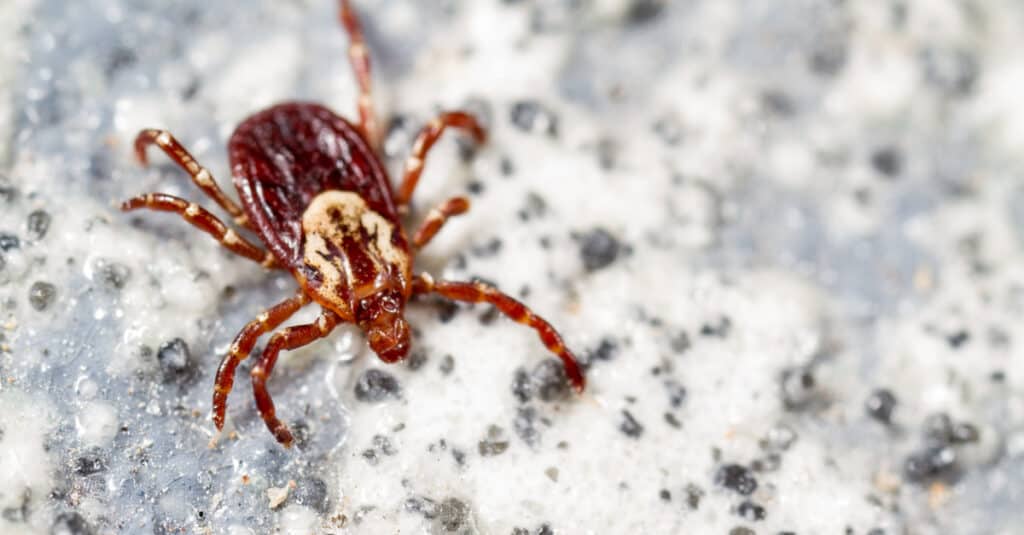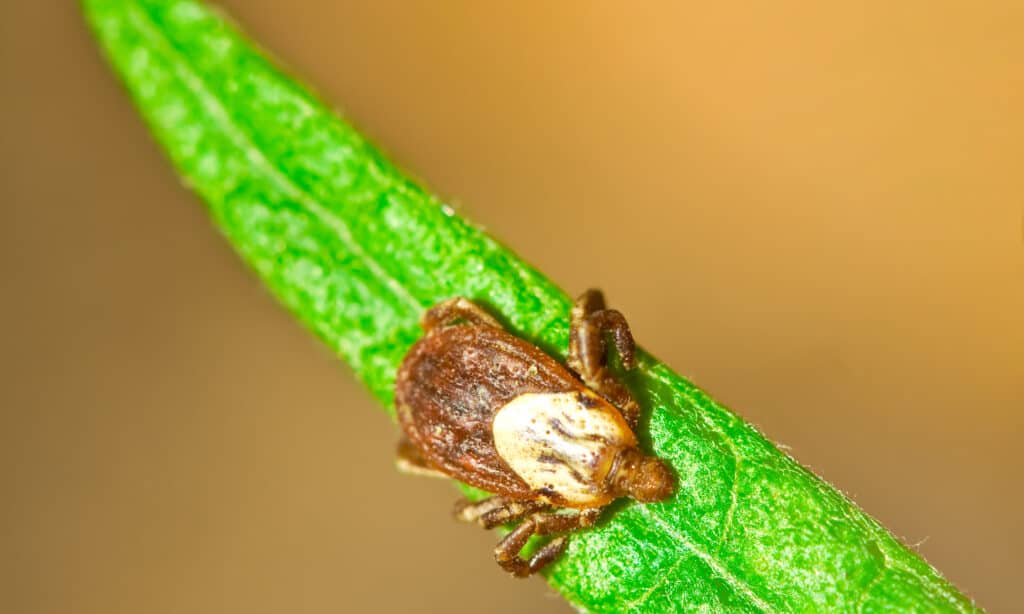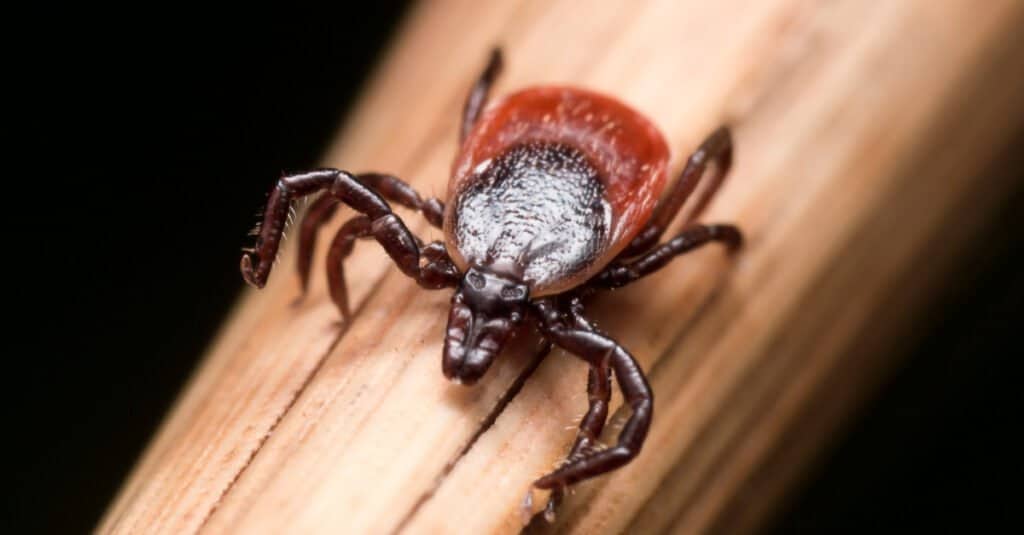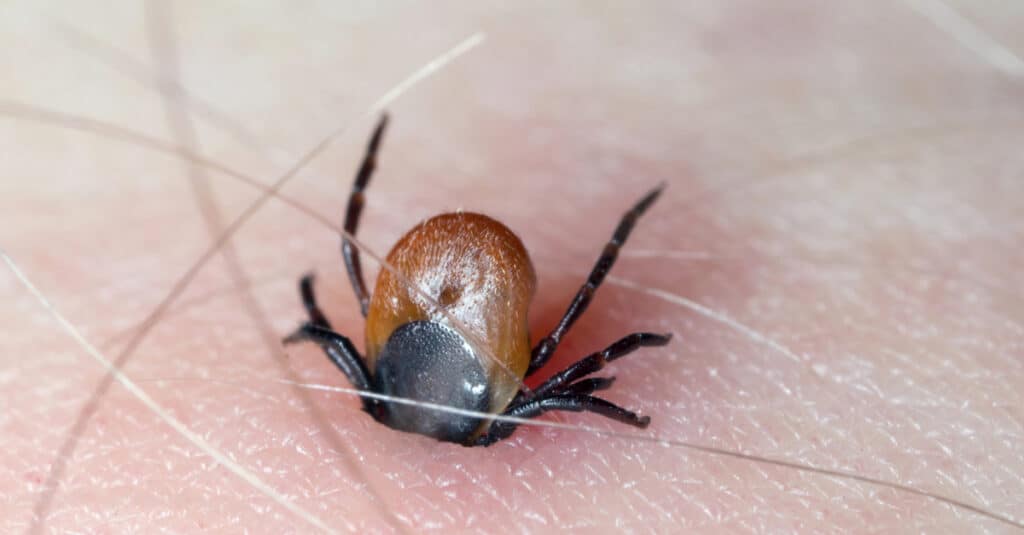If you’re planning on doing any hiking, backpacking, camping, or just plain nature walking in Idaho this summer, you may be asking yourself: are there ticks in Idaho? The answer to this question, unfortunately, is yes. Idaho is home to not one but three species of tick—the American dog tick, the Rocky Mountain wood tick, and the deer tick. All of these ticks can and will bite humans and dogs. So, if you’re going outdoors in Idaho during tick season, it’s best to know about these tiny bloodsuckers and how to avoid them.
Here, we’ll learn more about the three most common types of ticks in Idaho. Then, we’ll go over the best times of year for avoiding ticks. After that, we’ll talk a little bit about Lyme disease, what it has to do with ticks, and whether or not you need to be worried about it in Idaho. Finally, we’ll take some time to learn about the best ways to avoid ticks and their dangerous bites.
American Dog Tick (Dermacentor variabilis)

The American dog tick is one of two species of tick commonly referred to as a ‘dog tick.’
©Elliotte Rusty Harold/Shutterstock.com
One of the most common ticks in Idaho is the American dog tick. This tick is hard-bodied and dark brown. Females have a white scutum (the shield-like structure just behind their head), while males have mottled tan and brown coloring. Unlike some species of ticks, the American dog tick is not found in woodlands. Instead, they make their homes in open fields.
American dog ticks live throughout many parts of North America, including the eastern and southern United States and along the Pacific coast as far north as Alaska. They’re also known as wood ticks. These ticks in Idaho transmit Rocky Mountain spotted fever.
Rocky Mountain Wood Tick (Dermacentor andersoni)

The Rocky Mountain wood tick prefers mountainous zones.
©South12th Photography/Shutterstock.com
Rocky Mountain wood ticks spread not only Rocky Mountain spotted fever but also Colorado tick fever virus. As their name suggests, they live along the Rocky Mountain belt of North America and outlying areas. Like the American dog tick, the Rocky Mountain wood tick lives in grasslands and shrublands rather than forests. They’re much more common in mountainous areas than American dog ticks.
Rocky Mountain wood ticks are red-brown, and males have a tan scutum. Like all ticks, they have eight legs and abdomens that swell many times their normal size when filled with blood. They’re commonly found at elevations above 4,000 feet. These ticks in Idaho are long-lived, with lifespans of up to three years.
Deer Tick (Ixodes scapularis)

The deer tick has a hard body that expands greatly when filled with blood.
©Steven Ellingson/Shutterstock.com
One of the most common ticks in Idaho is the deer tick, also known as the blacklegged tick or bear tick. These ticks are easily recognizable by their black legs. When unfed, their bodies are black, turning gray when engorged. Deer ticks are most common in the eastern and midwestern United States, though they live as far west as Idaho. Their name comes from their most common food source—the white-tailed deer. But, deer ticks will also feed on rodents, reptiles, birds, and even humans.
Unlike other species of ticks in Idaho, deer ticks spend most of their lives in forests and the edge zones between woods and grasslands. They live around two years and take three hosts in that time. Unengorged, they’re around the size of a sesame seed, but, engorged, they can grow far larger.
When is Tick Season in Idaho?
Ticks in Idaho are most active in the spring and summer months. This is when females lay their eggs, young hatch, and ticks feed. By the winter, most ticks go into a type of hibernation, often hiding in leaf litter or dead grass. They’re less likely to be active during the hottest parts of the summer and fall. So, if you’re planning on hiking outdoors in Idaho in the spring or summer, be sure to watch out for ticks, and educate yourself on the dangers of tick bites. Further, you should have a good understanding of what to do if a tick bites you or your canine companion.
Do Ticks in Idaho have Lyme Disease?

Lyme disease is a bacterial infection spread by ticks when they bite humans.
©Tomasz Klejdysz/Shutterstock.com
Deer ticks in Idaho are the only type of tick that spreads Lyme disease. Rocky Mountain wood ticks and American dog ticks carry Rocky Mountain spotted fever and some other types of infection, but not Lyme disease. Lyme disease spreads through the tick’s bite. When the tick feeds on human blood, it may pass whatever bacterial infections it carries (like Lyme disease) onto the human host.
How Do You Avoid Ticks in Idaho?
Avoiding ticks in Idaho is fairly simple; it requires only a few basic steps. First, be sure to wear long pants and long-sleeved shirts whenever you spend time outside in tick season. Try to avoid walking through areas with tall grass, as ticks hang out on grass blades, waiting for hosts to walk by. If you have a dog, be sure to equip them with flea and tick prevention before hiking or other outdoor activities.
After your hike, be sure to check yourself and your canine companion for ticks. Ticks are most likely to bite exposed areas of skin, like arms and legs, but can be found on any part of the body. In dogs, ticks target easy-to-reach flesh, like the areas around the ears and where the legs join the body. Ticks in Idaho may be a nuisance, but they’re easily avoidable with these simple steps.
The photo featured at the top of this post is © South12th Photography/Shutterstock.com
Thank you for reading! Have some feedback for us? Contact the AZ Animals editorial team.






